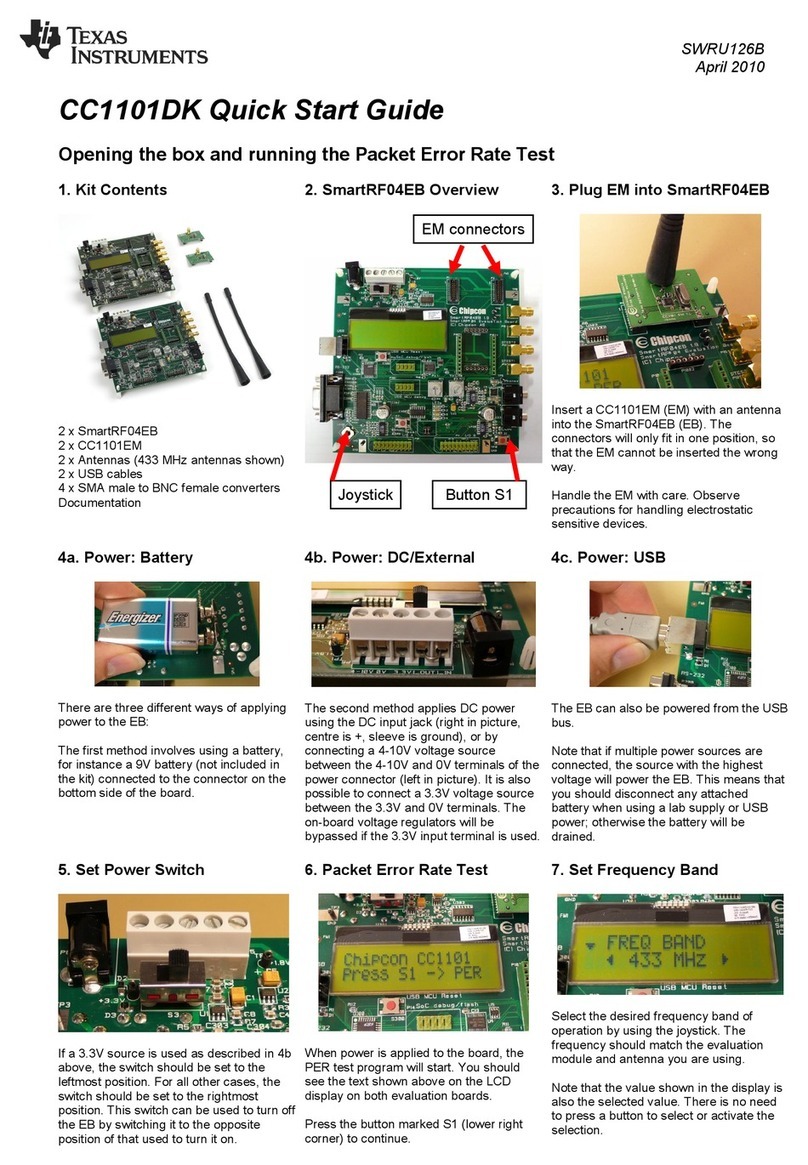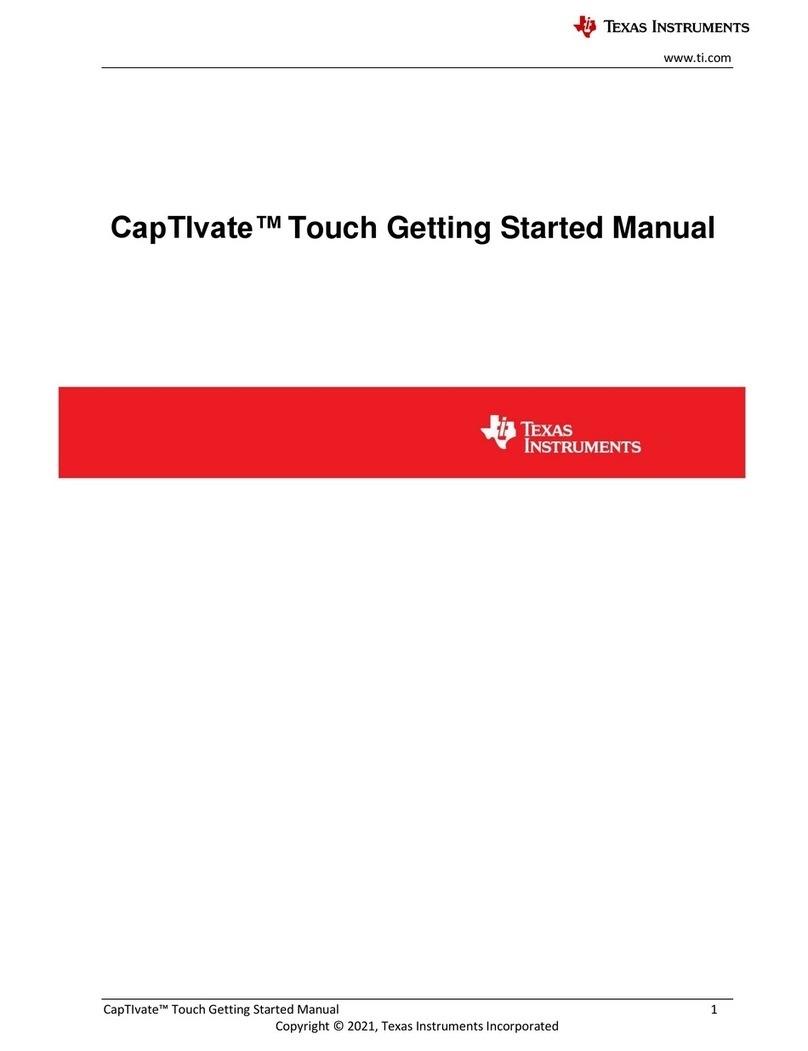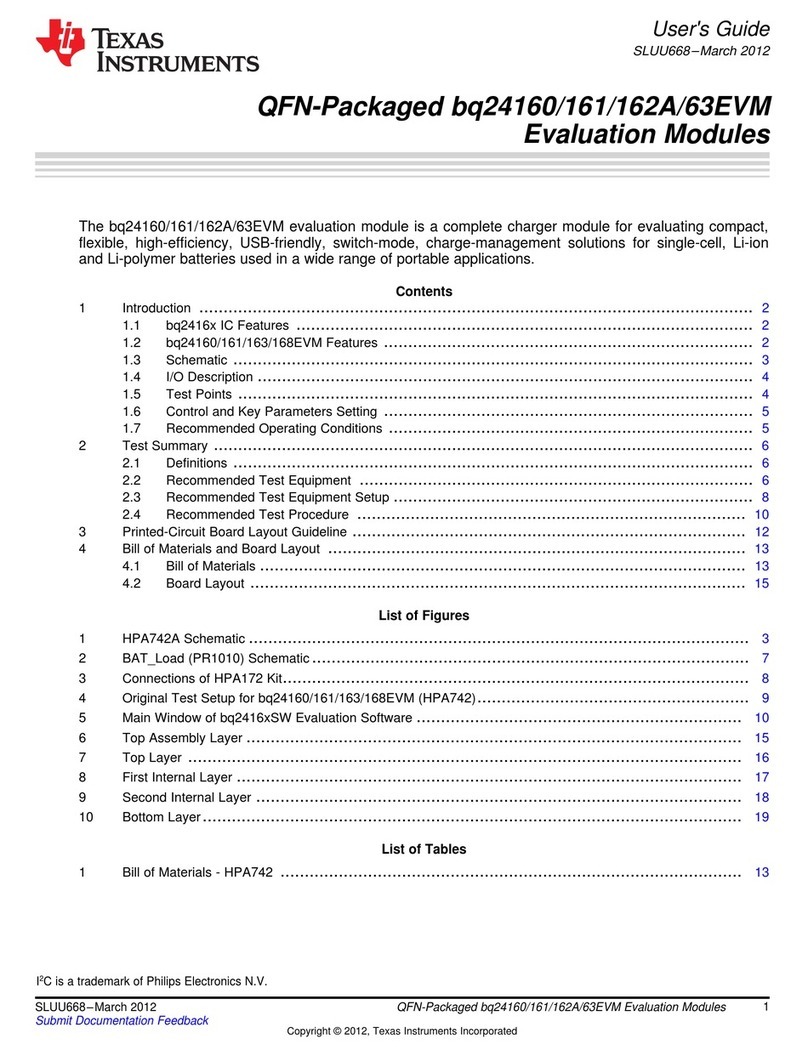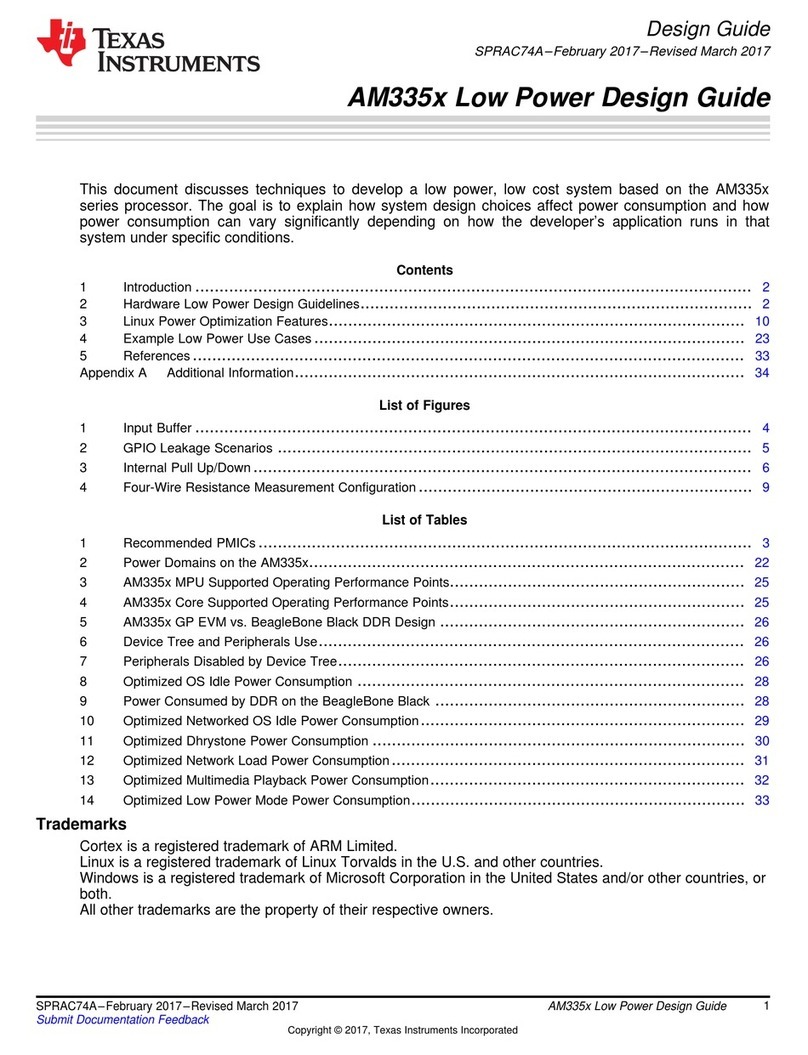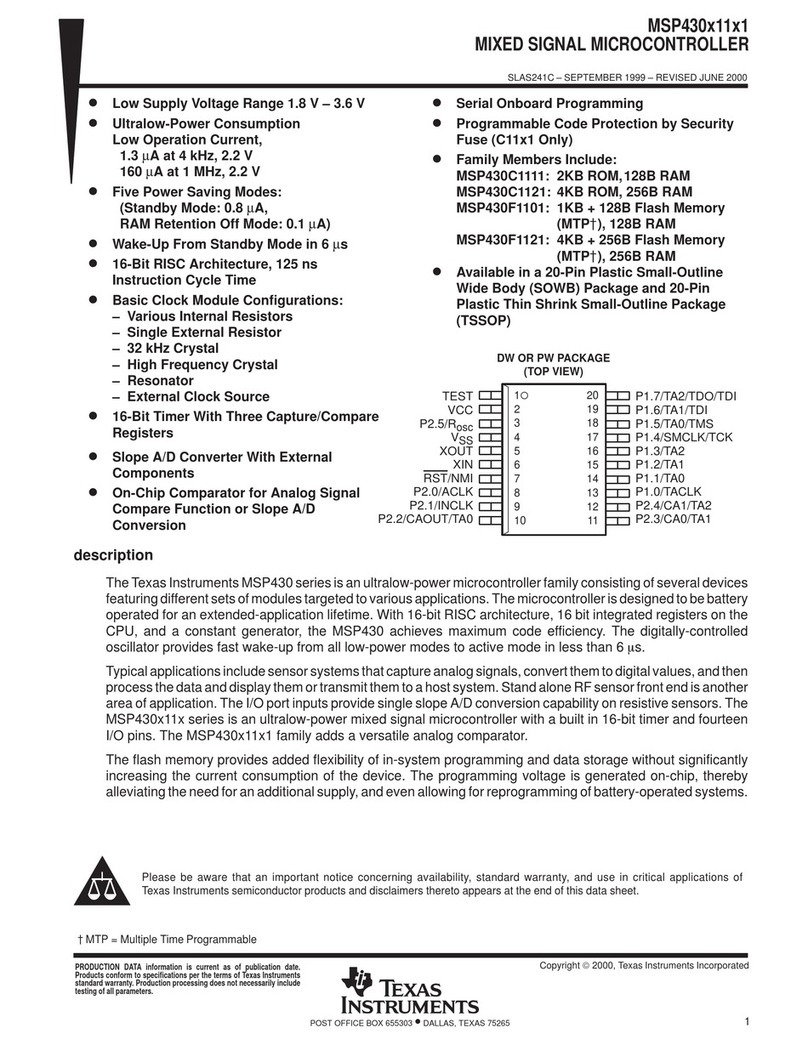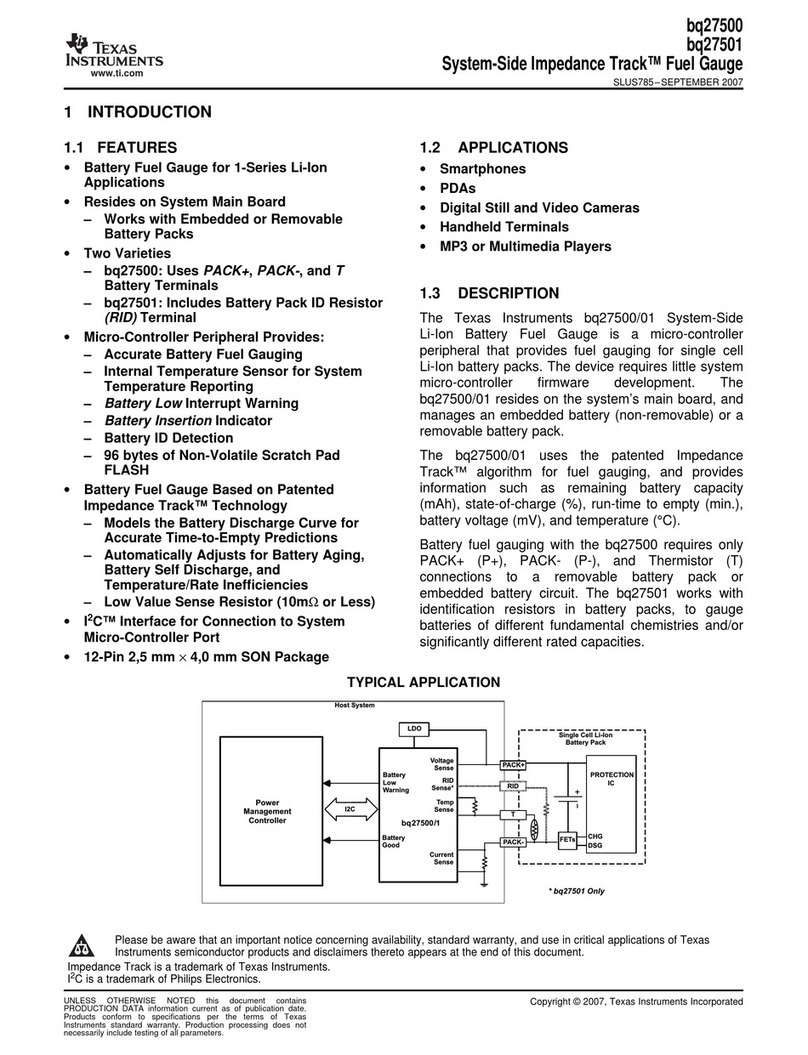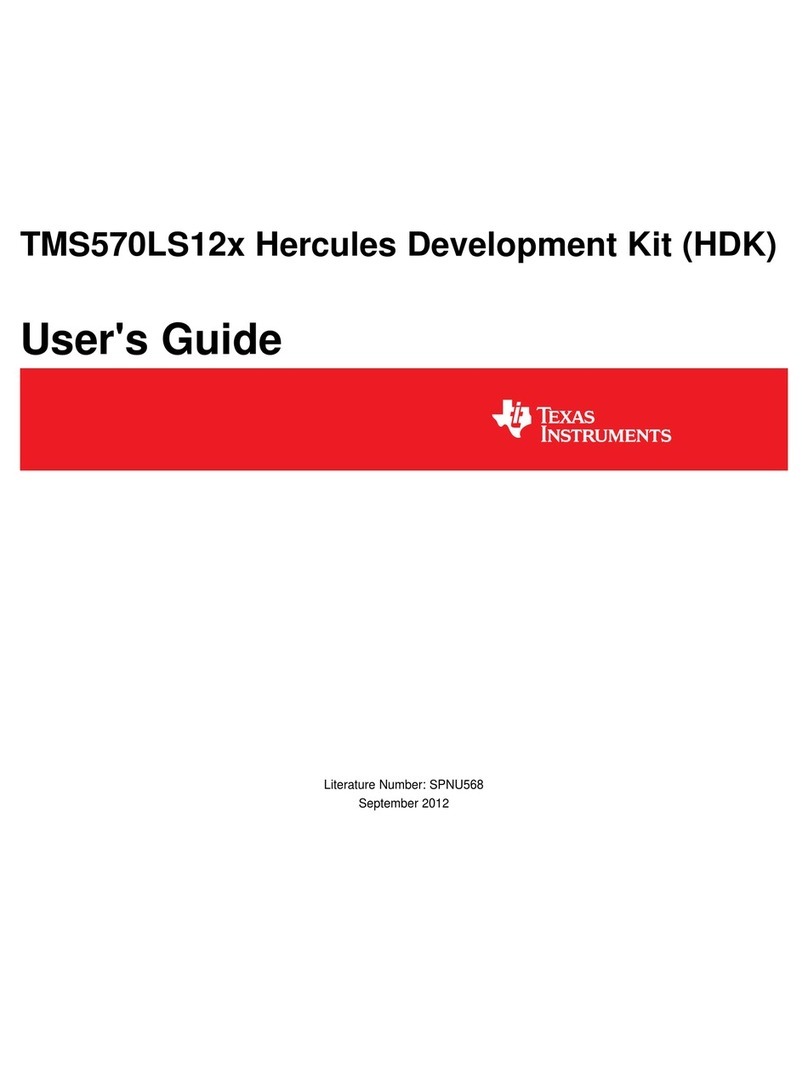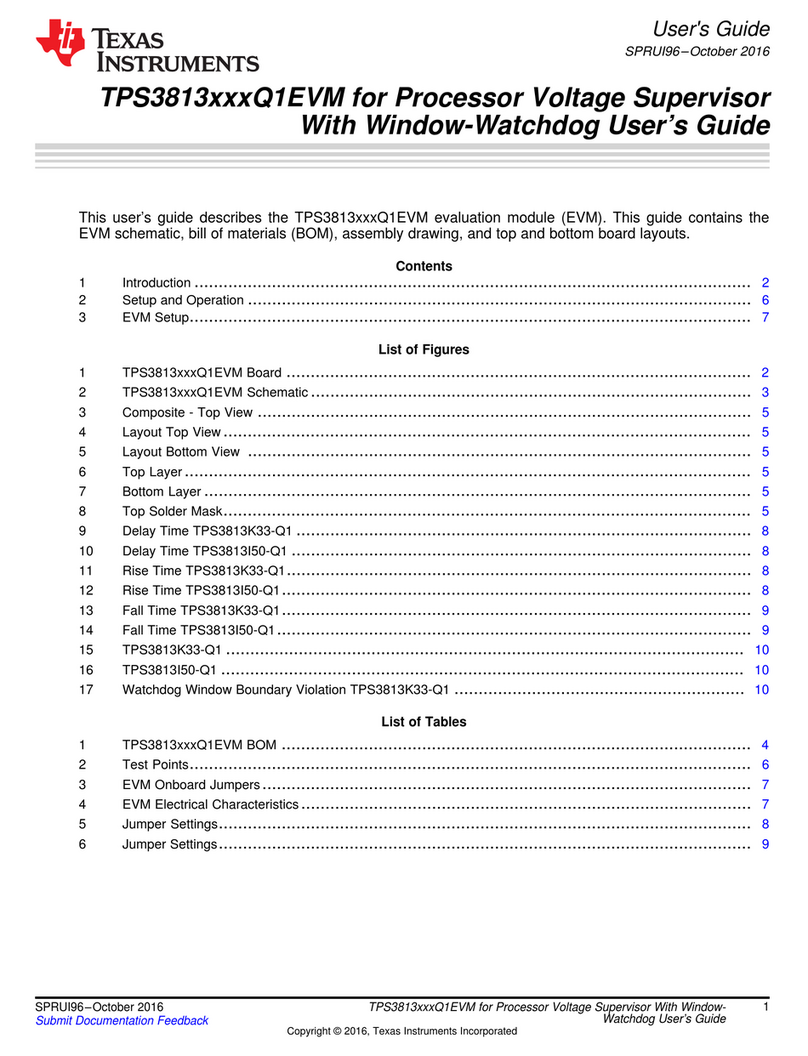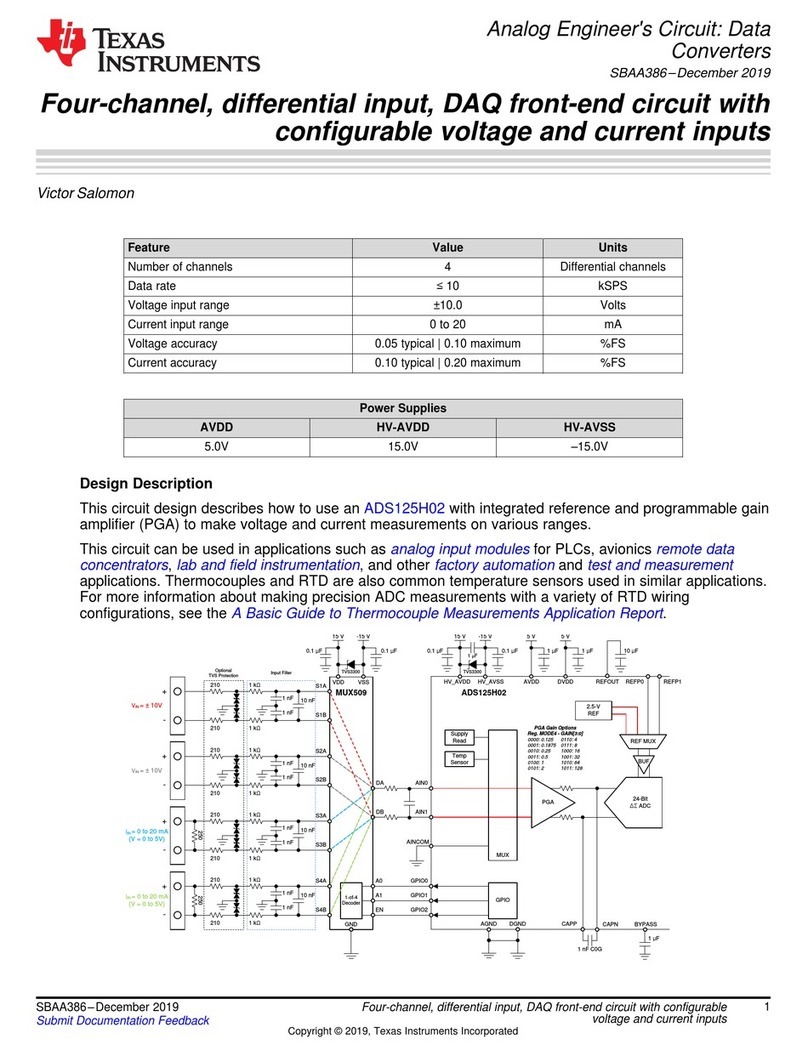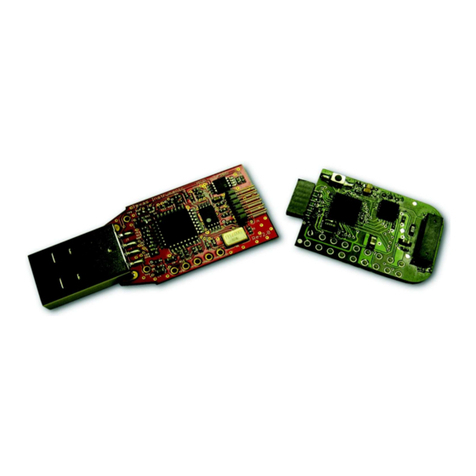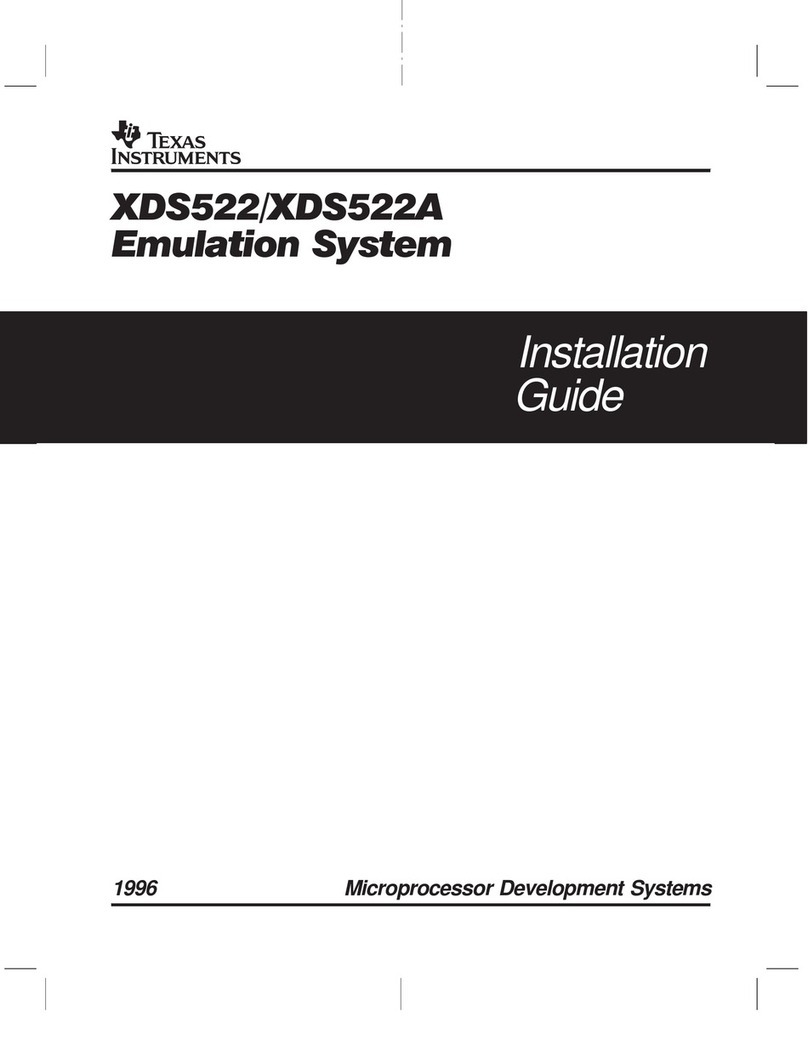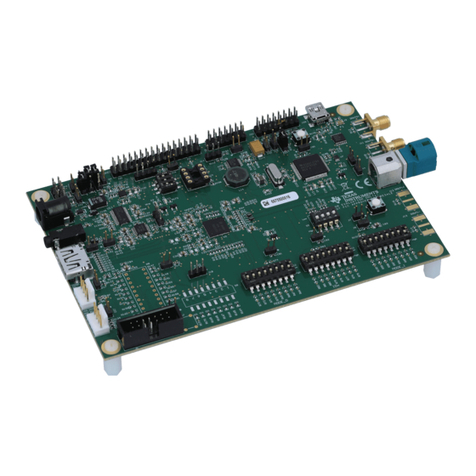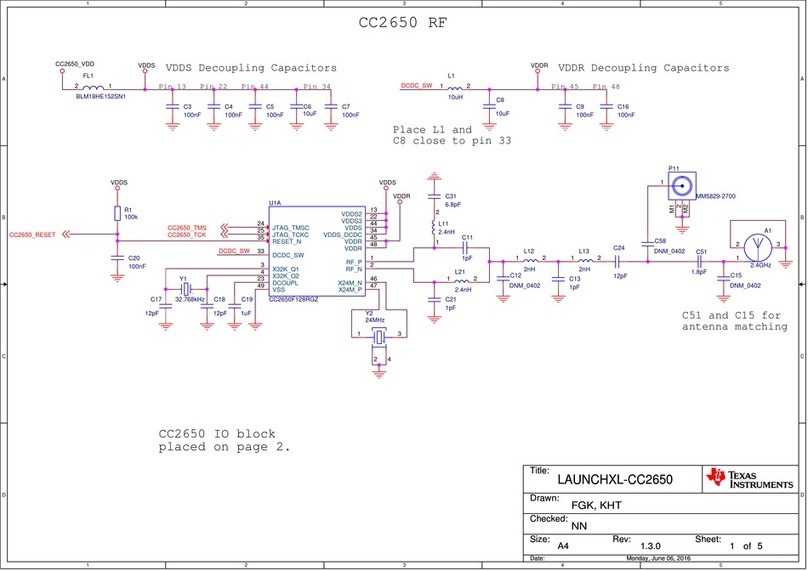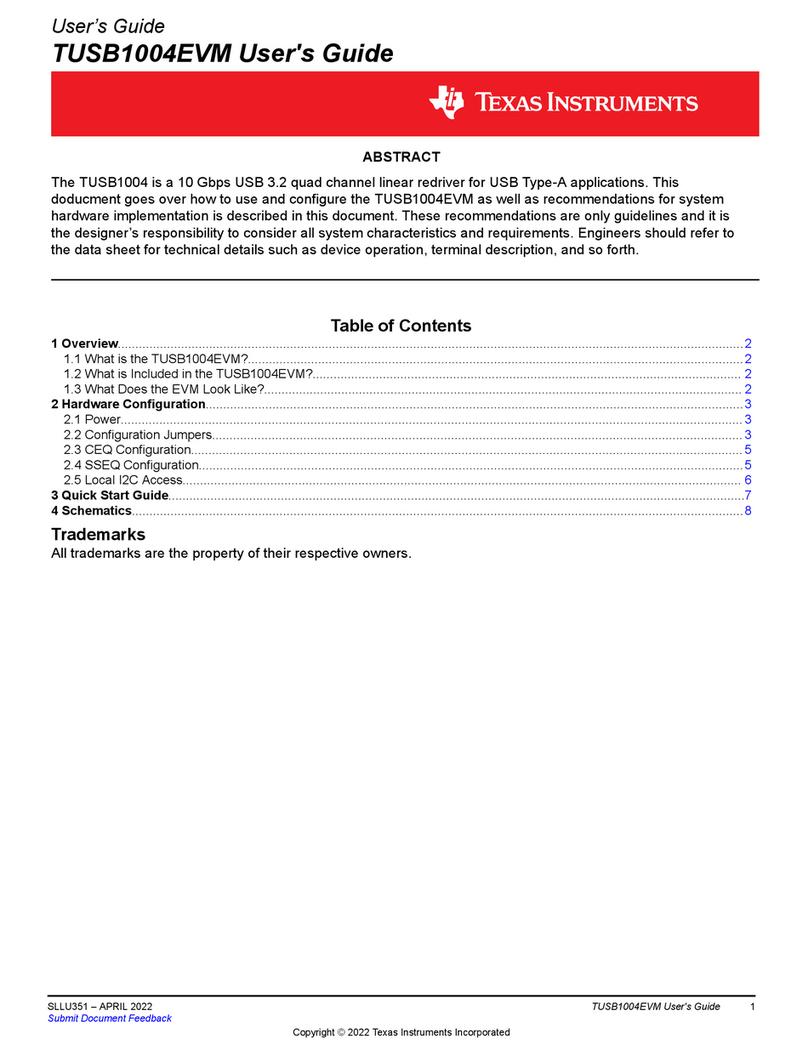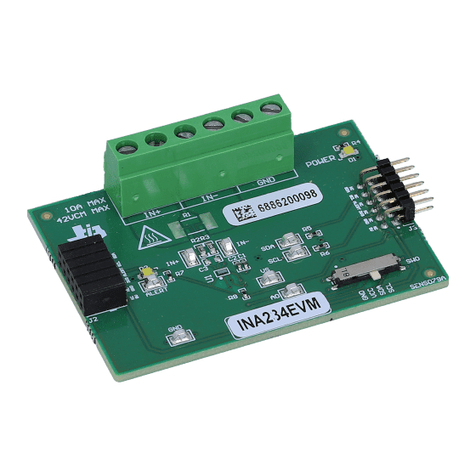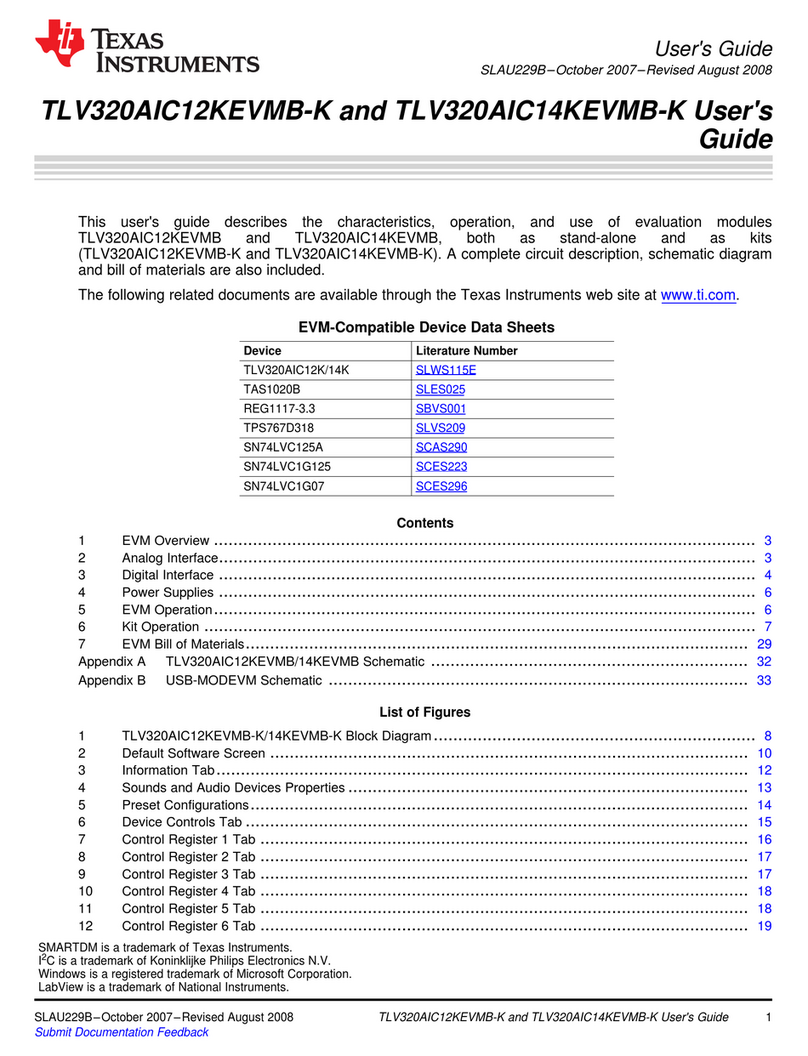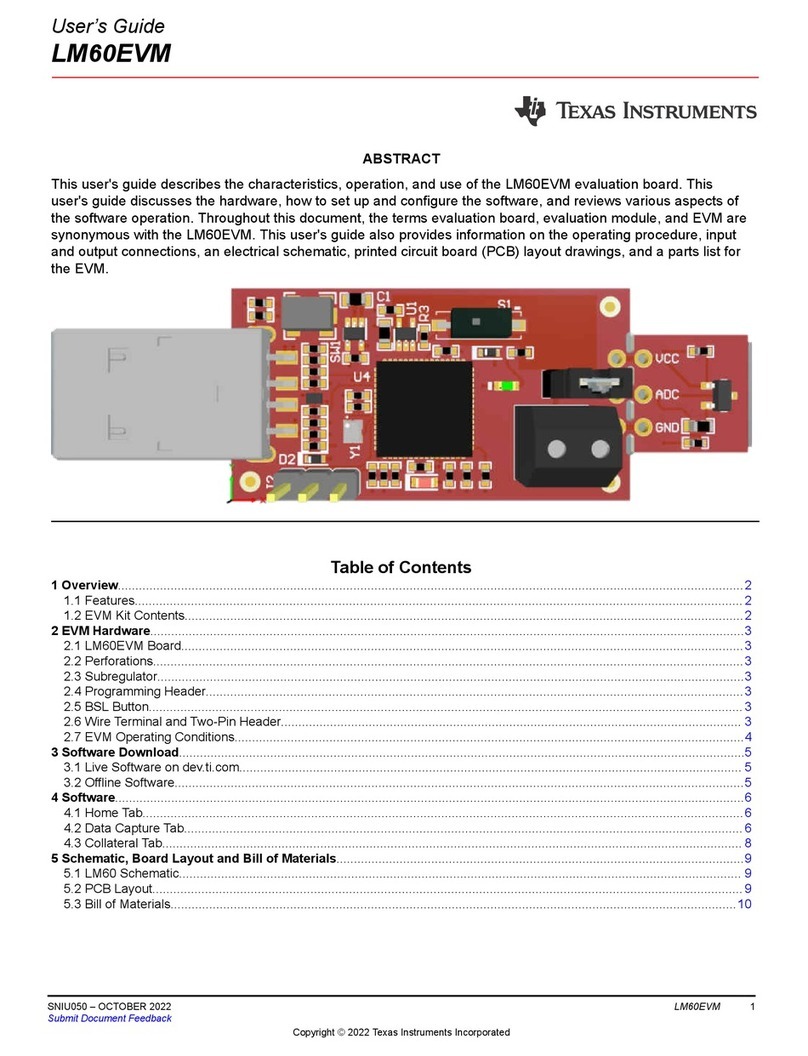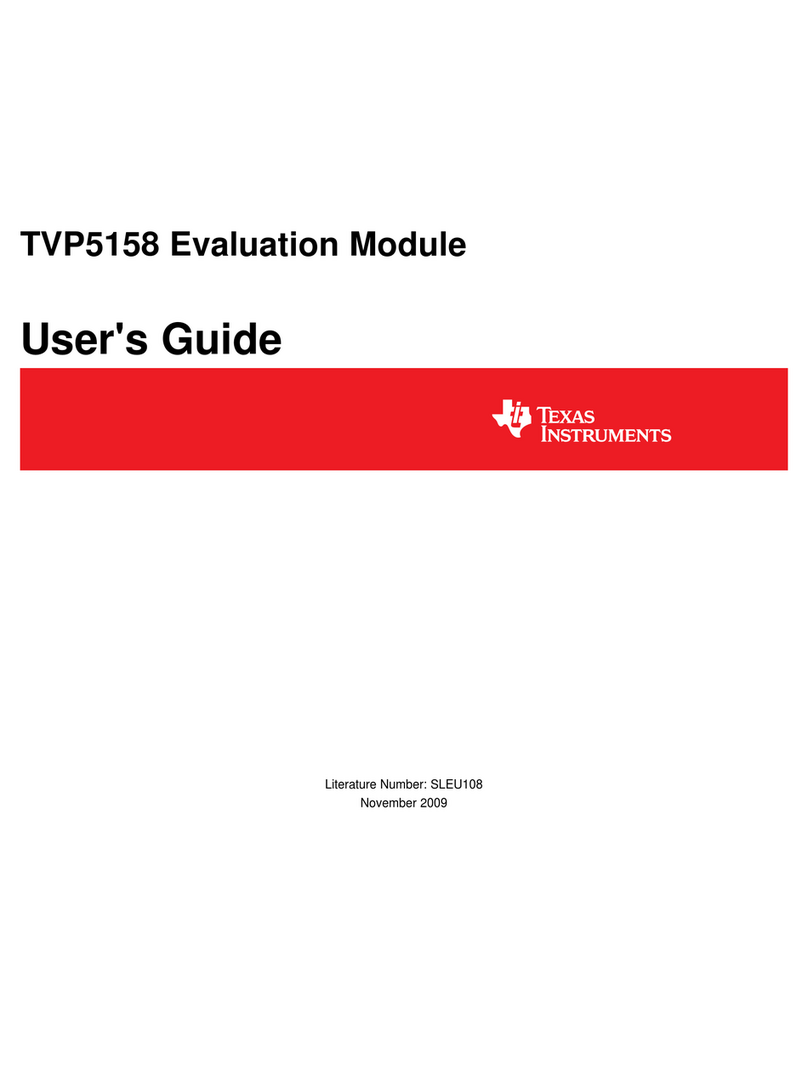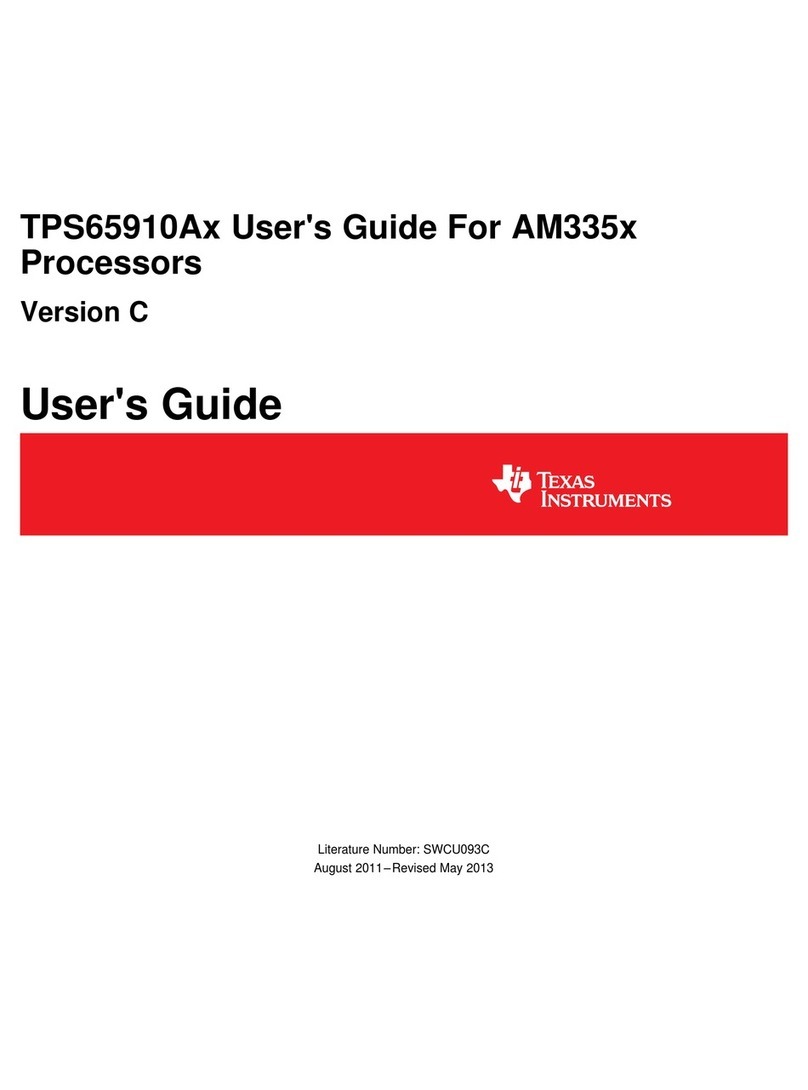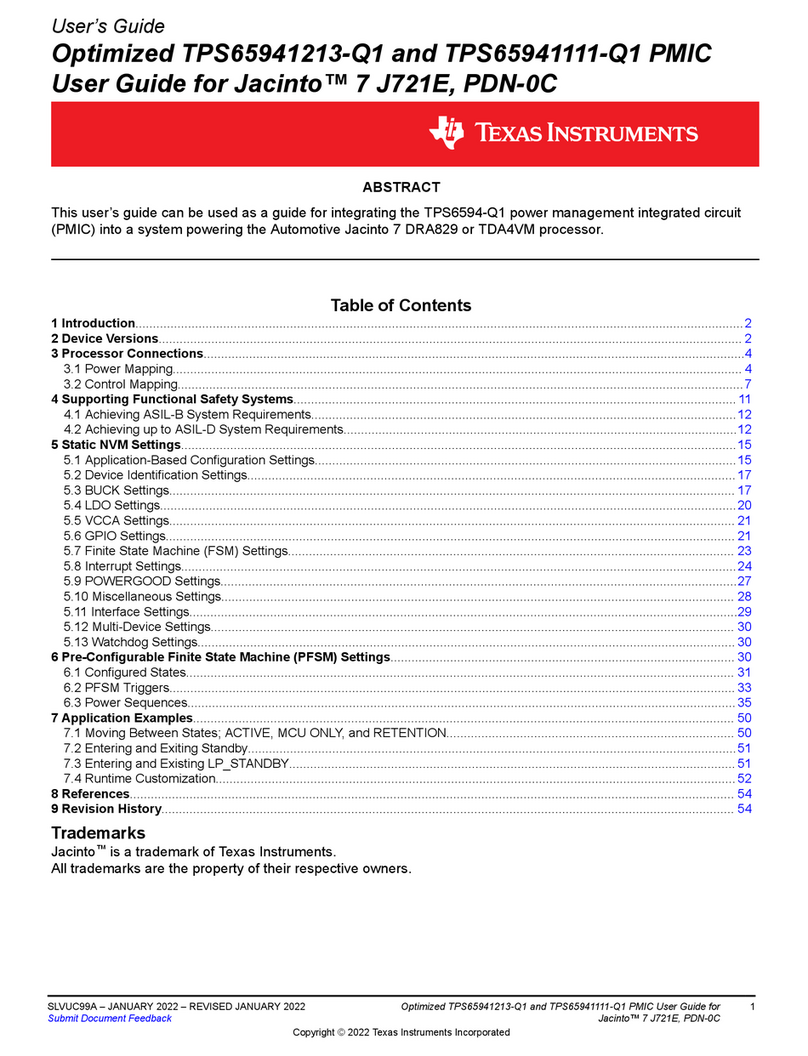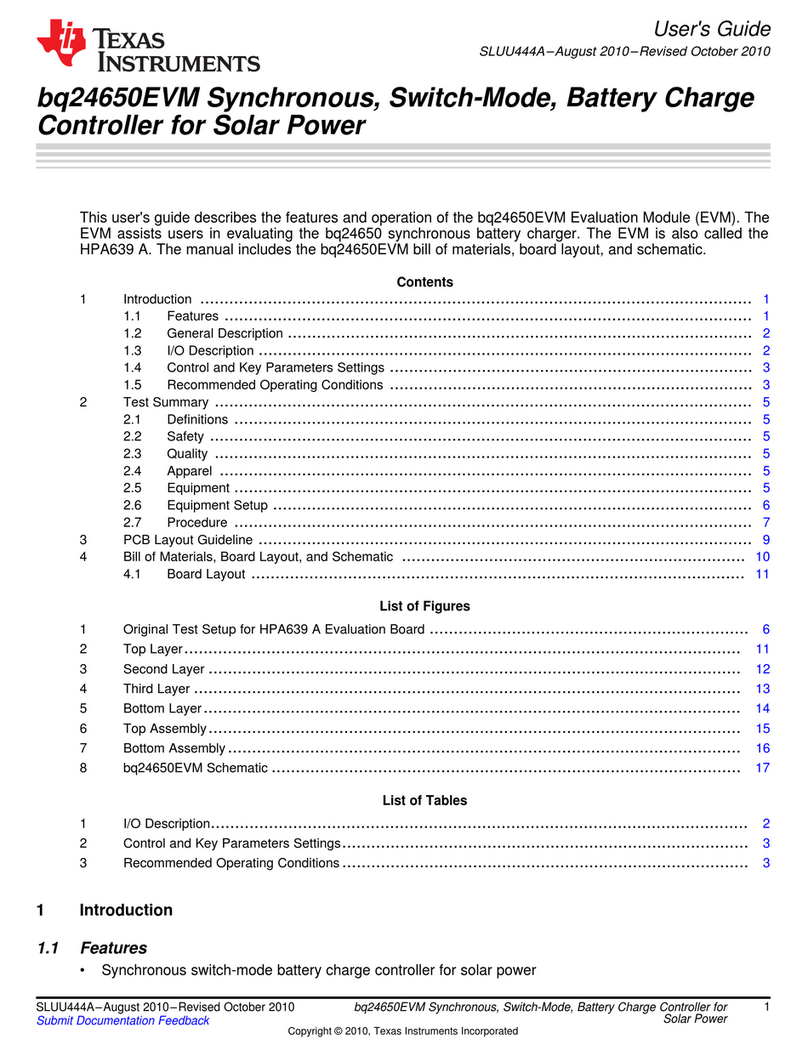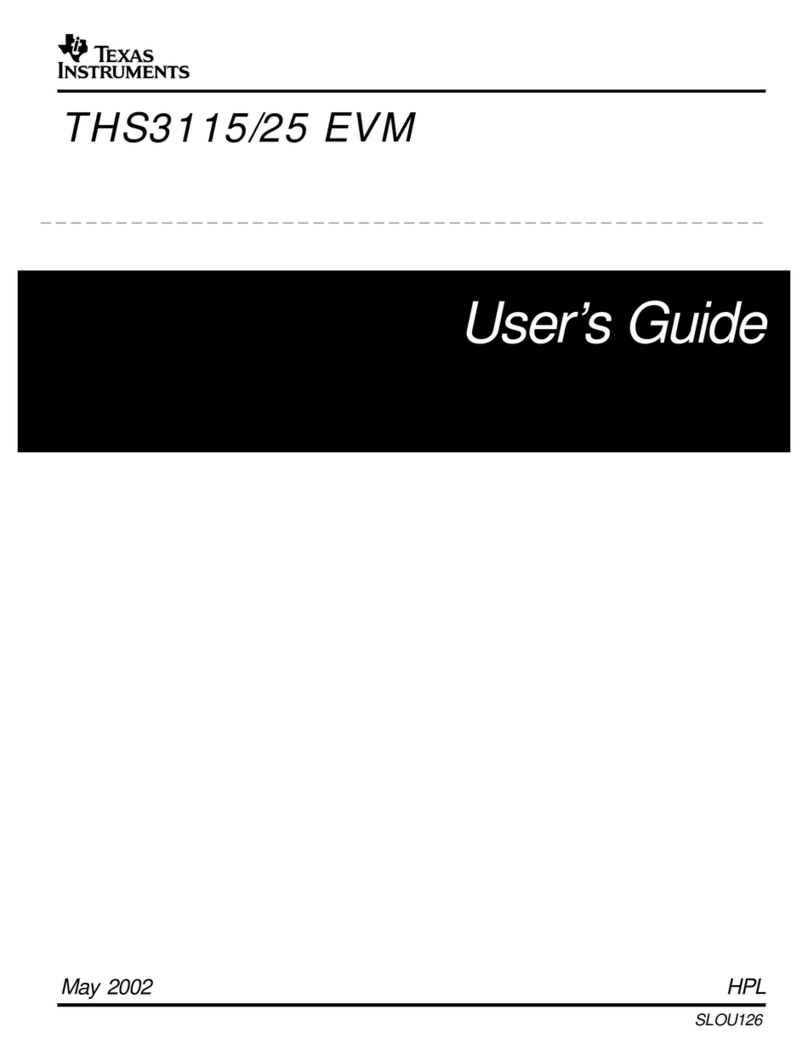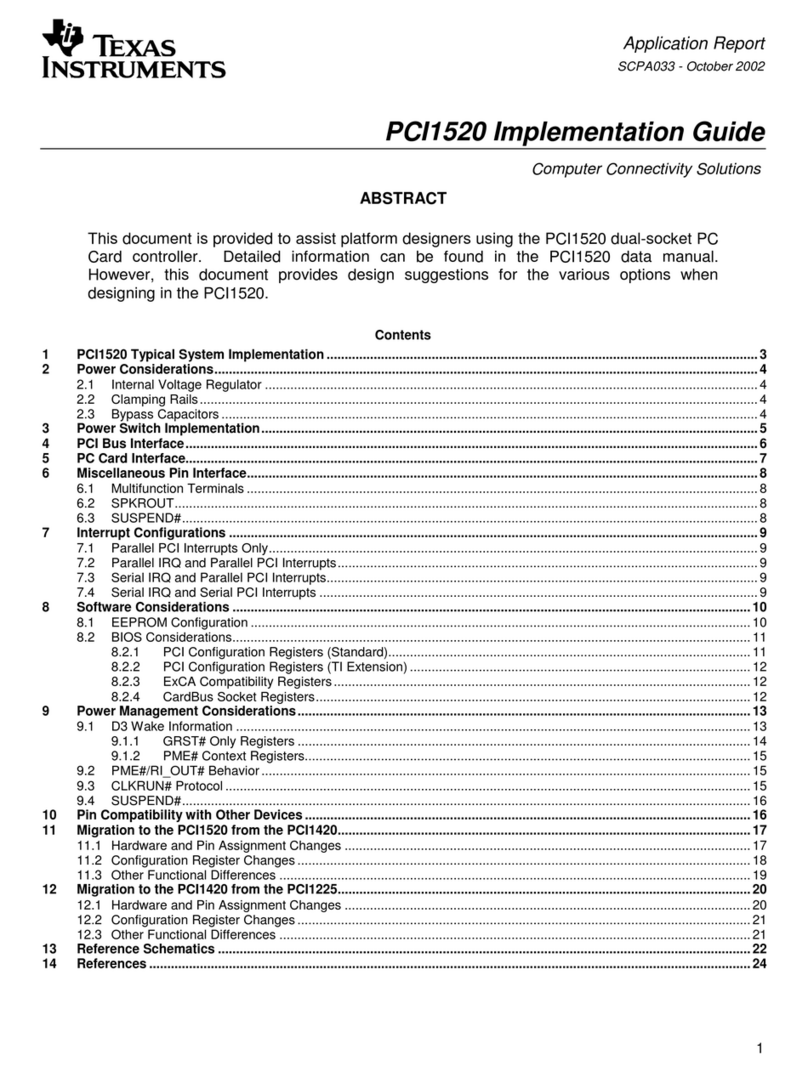
5.3 Peripheral Configuration
5.4 Configuration Tables in I2C ROM
5.5 Boot Modes
5.6 Boot/Initialization Sequence
Device Configurations and Initialization
Other than the device reset configuration covered in Section 5.1 , all other configurations are done byregister accesses. The first step to configuring a peripheral is to enable it using Peripheral ConfigurationRegister 0 and 1. Since all peripherals not needed for the selected boot mode are disabled, a first levelboot loader may be needed to enable interfaces needed during the full boot load. For example, if theapplication code to be loaded (.OUT file) loads data into an external memory, a first level boot loader mustbe loaded and executed to enable the EMIF interface. If the Boot Mode selection specifies a particularinterface for boot, it is automatically enabled and configured. Note that Peripheral Configuration Register 0and 1 are only accessible by the CPU, therefore, it is not possible to configure these registers directlythrough a host interface like the HPI and PCI. For more details on peripheral configuration refer to theDevice Configuration section of the TCI6482 data manual.
The EMAC interface requires some PLL2 configurations. The specific settings are dependent on the MIImode. For details on PLL2 configuration refer to the TMS320TCI648x DSP PLL Controller ReferenceGuide (SPRU806).
For some peripherals, the peripheral operating frequency is dependent on the CPU core clock frequency.This should be accounted for when configuring the peripheral.
All other peripheral configurations are done within the peripheral module. For configuring the peripheralmodule refer to the specific peripheral’s user guide.
I2C ROM contents can contain Configuration Tables which allow customer defined memory map accessesduring the I2C boot mode. These accesses can be used to configure peripherals during the boot process.For details refer to the TMS320TCI6482 Bootloader User's Guide document.
The interfaces which support a boot loading process are: I2C, HPI, PCI, Serial RapidIO and EMIF (8-bitROM). In addition, a first level boot loader (loaded using one of those interfaces) can configure theEthernet or Utopia interfaces for a secondary boot load. For a summary of the boot modes supported referto the TCI6482 data manual. For details regarding boot modes, refer to the TMS320TCI6482 BootloaderUser's Guide document.
Regardless of the boot mode selected, an emulator connection can always reset the device to acquirecontrol.
If the PCI interface is enabled, it supports an optional auto-initialization feature which will load the PCIconfig registers from an I2C ROM before the boot load is performed.
Generic bring up procedure:1. Follow power-up and reset sequencing per the TCI6482 data manual.2. When the POR (or RESET on a warm boot) signal is de-asserted the boot strapping options arelatched and the boot mode selection controls what happens next:a. If the PCI interface is selected and auto-initialization is enabled, the auto-initialization is performedb. Booting over I2C loads code contents into L2, code is executed after last code section is copiedc. Booting over EMIF starts executing from the base address of CE3 spaced. Booting over HPI, PCI or Serial RapidIO puts the device in a state that waits for code to be copiedthrough those interfaces into L2 and an interrupt to initiate the execution of that code.3. Boot code (at a minimum) should configure the PLL1 core clock frequency and also enable andconfigure the required peripherals and:a. PCI and SerialRapidIO boot modes configure the PLL1 for a 15x multiplier to allow properoperation of those interfaces. After the boot load is completed, application code should change thePLL1 to final desired multiplier. Due to the use of the 15x multiplier, the CLKIN1 should be nogreater than 50MHz when selecting the PCI or SerialRapidIO boot modes.
SPRAAC7B – April 2006 TMS320TCI6482 Design Guide and Migration from TMS320TCI100 7Submit Documentation Feedback
